I had such a great time going over ranch life with Rachel of the 5280 Meat Co. during our interview. I really wanted to get educated on grass fed not only for my own understanding but for all of you to understand the different terms, process and benefits. Grass fed is definitely on the rise in many health communities, especially paleo.
Although this wasn’t the first time I had cooked with grass fed beef, it was the first time I had tried 5280Beef and really got to dive in and get all my questions answered. As you will see below when reading my 2nd interview with Rachel, her and her family have a passion for what they do and their love can be tasted in the meats they produce.
I have been working non-stop at creating fun recipes with the 5280 products. One of my favorites being my short rib recipe that is always a favorite. Making it with the 5280 Beef short ribs added a new healthy flair to it and was eaten by my family before I could even snap my fingers.
Keep on the lookout for more recipes using 5280Beef and 5280Pork. I have been having such a fun time experimenting and playing with the flavors! I definitely have more recipes to come! Also keep an eye on new giveaways to enter.
1. The subject of grass-fed is certainly a hot item in the paleo world. I’m so glad to be talking with you to shed some light and clarify some things on this topic. So, tell me what does grass-fed mean to a rancher and to your public?
Well, most ranchers only know to feed cows grass and hay. They understand the traditional methods of finishing cows on grain, but most ranchers do not end up finishing their calves. In October of every year they ship their calves to preconditioning feedlots or sell to other larger ranches that will hold the calves through the winter. Eventually most steers, castrated bull calves, end up in finishing feedlots before processing, which on average is around the 18 month old mark.
2. What are the important differences between grass-fed and grain-fed? We think there are three really distinct differences. Don’t get me wrong, there are several, but for the most part we focus on the differences of: 1) Health Factors 2) Chemical Makeup of Cows 3) Fat Content
Health Factors:
- 100% grass-fed beef is much better for you compared to grain finished. Beef from grass-fed cattle is lower in total fat and lower saturated fats.
- Grass-fed beef contains healthier omega-3 fatty acids and better ration of omega-6 to omega-3, than corn-fed beef, whose omega-3s diminish while at the feedlots.
- Grass-fed beef is higher in conjugated linoleic acid (CLA), a nutrient associated in helping lower cancer risk, cardiovascular disease, high blood pressure, high cholesterol and overall body fat. CLA is not manufactured by the human body and one source to obtain it is from grass-fed beef.
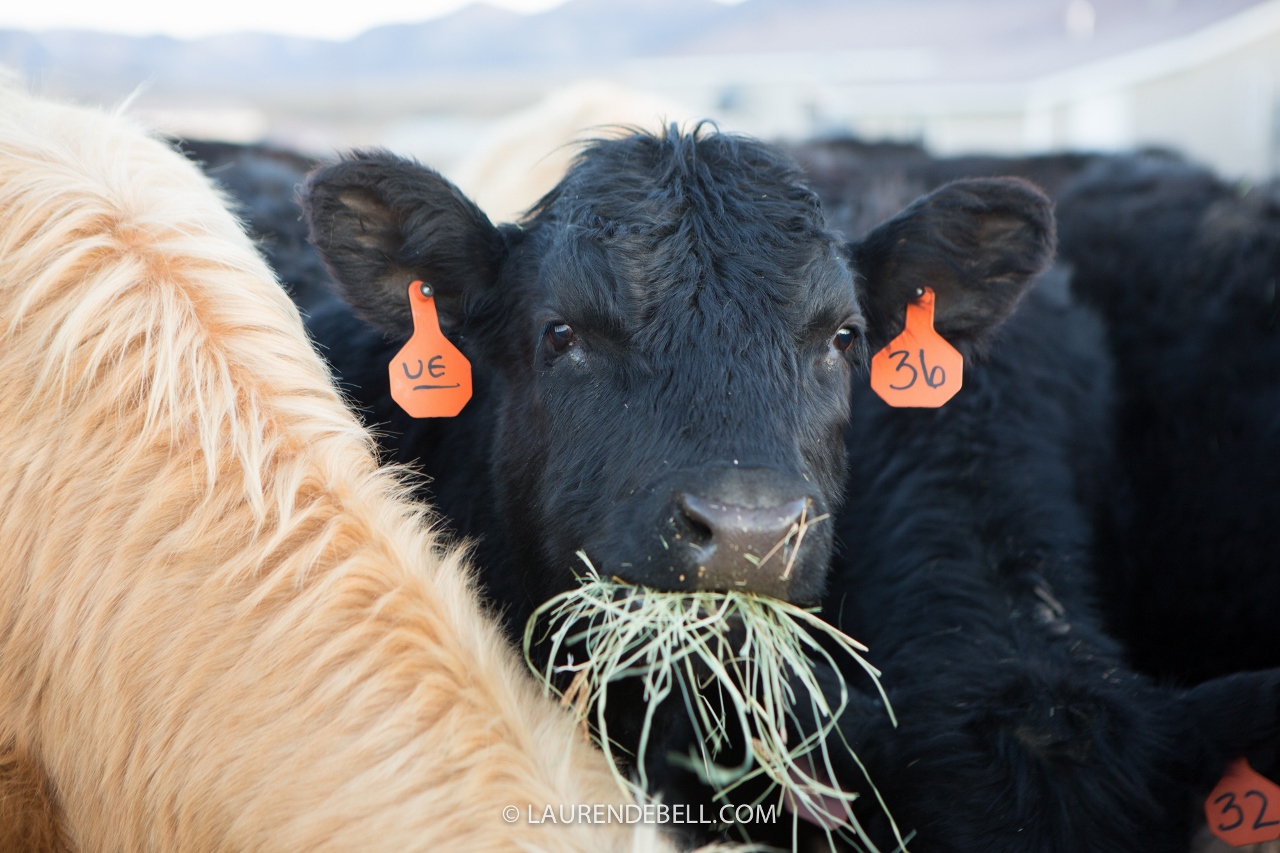
Chemical Makeup:
- Cows are designed to eat grass, they are herbivores. I touched a little bit about it in the first interview about how their tongues and dental pad are perfect for grasping and pinching blades of grass. Cows are in a class of animals knows as ruminants. Ruminant animals have four chamber stomachs which are designed to digest grasses and plants. Cows do something called “chewing their cud”. When I watch our steers, they always look so happy and content when this happens! What they are doing is regurgitating their food and chewing it up again. Basically, it would be like us swallowing large amounts of food then bringing it all back up and re-chewing it for better digestion. I also learned recently why cows are so slobbery! Their bodies create a lot of saliva in one day, which is necessary to help digest their food. Feeding cows too much grain can disrupt the natural pH in their stomachs causing for digestion problems.
Fat Content:
- Our beef’s fat is more yellow in color, whereas, grain finished beef is whiter. It’s bizarre, because at first we expected the fat to be yellow for grain and white for grass, but it’s completely the opposite. Our steers are much leaner and again, will only dry age* for 14 days versus 21 to 28 days on grain finished steers. Also, you won’t find a behemoth T-bone or porterhouse on our steers. Our cuts are smaller; they simply do have the huge bulk of feedlot/steroid pumped beef.
*Dry Aging: Dry aging is the process where after the animal is processed and cleaned, it’s carcass is hung either in whole or half in a climate controlled environment for a certain period of time and allows the meat’s natural enzymes to break down and actually tenderize the meat and increase the concentration of flavor. In the first phase of dry aging, water/moisture will evaporate from the muscle and then the second part is where the meat’s own natural enzymes will break down the connective tissue in the meat, causing it to become more tender. Our beef hangs for 14 days because it’s pretty lean, but some grain-finished beef can be dry aged upwards of a month.
3. I’m sure that many people have noticed that there is a price difference between the two. Why is grass-fed meat more expensive than grain-fed and how can you help this be understood by the consumer, so we are all willing to stretch and buy grass-fed? Keep in mind many readers are on various budgets these days.
Absolutely! As are we! We don’t have the meat issue in our budget, but we do with the rest of our food and we make sacrifices (avoid check-out aisle impulse buys, cut back on coffees at Starbucks, bring your lunch, cut back on eating out etc.). We try to cut back in other areas so we can afford quality food. We really believe that consumers need to think about food as fuel and not just something we consume. You wouldn’t put diesel in a tank that used unleaded because the car wouldn’t work! We have sat down and devised a buying acronym when buying meat—100% grass-fed or not. It is about making better choices. Wherever you buy meat—consider: CLIFF
C—Clean: is the meat free of antibiotics, synthetic steroids, growth hormones? Read the label
L—Location: can you source where the meat came from? Is there any information on the label or that the butcher behind the counter can tell you ? ASK!!! It is ok to ask questions. Do not be afraid! A lot of meat in the United States is imported from around the world. If you are a consumer who prefers USA products, do some homework on the company/label/brand to see where their meats are sourced.
I—Information: Is there a company website you can visit to learn more? Check the label or write down the brands that your local supermarket carries and then go home and google.
F—Fed—what are the animals fed
F—Finished—what are the animals finished on
The last two might be a bit harder to find out and you might not be able to answer all the questions, but they are just points to consider when buying meats. Beef prices are sky high right now as ranchers try to replenish herds that were thinned due to drought in Texas and Colorado a few years back. With California having a dry summer too, beef prices might stay high for a while as some ranchers cannot afford to buy/truck feed so they sell their cows and stop producing, sending the supply downward, while the demand is still high. If you are on a tight budget, try looking at buying in bulk and splitting with another family or friend. We sell a whole beef, for $7.70/lb. which includes processing. When you consider you’ll get around 400 lbs. of meat, that’s not too bad! J
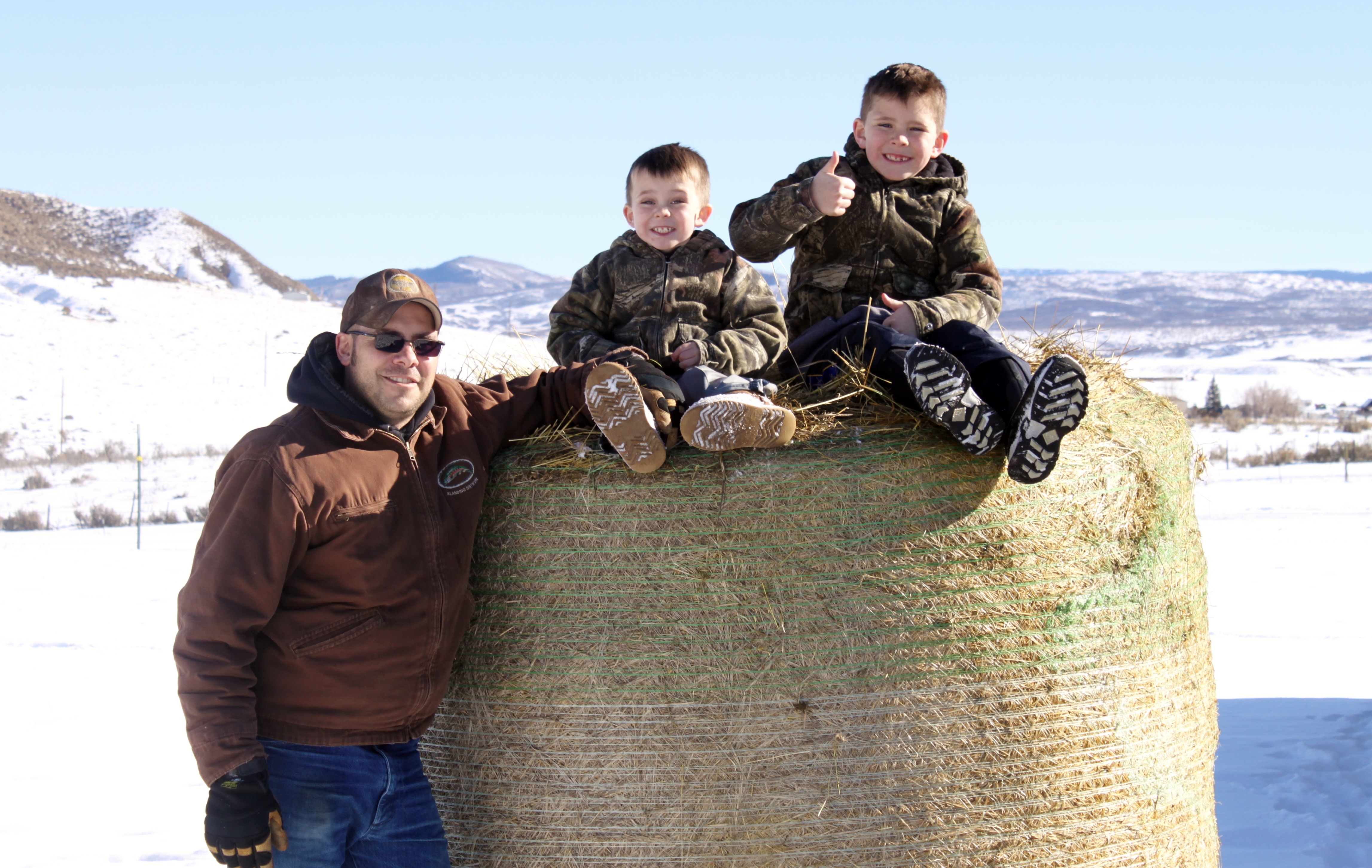
4. As Ty’s family has been in the ranching business a long time and has had ample experience with grass and grain-fed, can you tell us what the costs are with running a grass-fed ranch versus running a grain-fed ranch?
Typically there are not grass fed ranches and grain fed ranches. The finishing process takes place in feedlots where they are fed a grain ration. Most ranchers will save a steer or two to grain finish to feed their families. Our family ranch has been run as a typical cow/calf operation and we would sell our calves in the fall to a commercial feeder (feedlots). The cost of raising a grass fed calf boils down to the length of time you have to hold the calf to finish. With today’s market prices and buying a calf right off the cow to finishing will cost about $1700/animal. This includes buying the animal, hay/alfalfa to feed through the winter, and pasture for the summer. Summer grazing will run $15-17/ head per month. The cost of a grain finished animal is reliant on the corn market. Right now the corn markets are relatively cheap and you can feed a steer out that has a frame on him in 90 days. This would be around 900 lbs of feed and would cost around $250.00/head. The commercial feeders can feed them for much cheaper due to buying their feed in large quantities.
5. For health purposes, why should someone choose to buy grass-fed meats?
🙂 We talked about health benefits earlier in question 2, but just to add to that, in addition to grass-fed meats, in our opinion, if you are just looking for a ‘better’ option, if you had to take one step in a positive direction, ditch the meats with the steroids, antibiotics and hormones. That in our opinion is the first, key important change to make in your diet. Grass-fed or not.
6. Paleo talks a lot about choosing grass-fed over grain-fed. Many authors are and have been now writing about this; and now Time magazine and others are starting to come out with the many benefits of GOOD fats and the false information Americans have been given. How has this affected the sales in your business?
You know, I don’t know if we can really pinpoint a lot of sales to that article. What I think you’re seeing is the beginning of a tidal wave of change; it just takes time, ironically 😉 and habits are super hard to change. There has to be a conscious effort on the part of the consumer to want to do better, be healthier, acknowledge the connection between your health and the food you eat . We think over the next 5-10 years there will be a big difference in the way we eat and shop for food
7. People who haven’t eaten grass-fed meat will find there is a definite flavor difference from grain-fed meat. Can you talk about these differences and why?
We recently helped a local 4-H girl that was competing on the state level and she had to give a speech on this very topic. We gave her samples of meat and they did a blind taste test using our grass finished meat and their typical corn finished meat that they have eaten for years. They said that they could not taste a difference in the meat whatsoever. The only differentiating factor would be fat content and the size of steaks. Grass finished beef will not have the marbling and back fat content. We have been told that our products just look, feel, smell and taste fresh and clean.
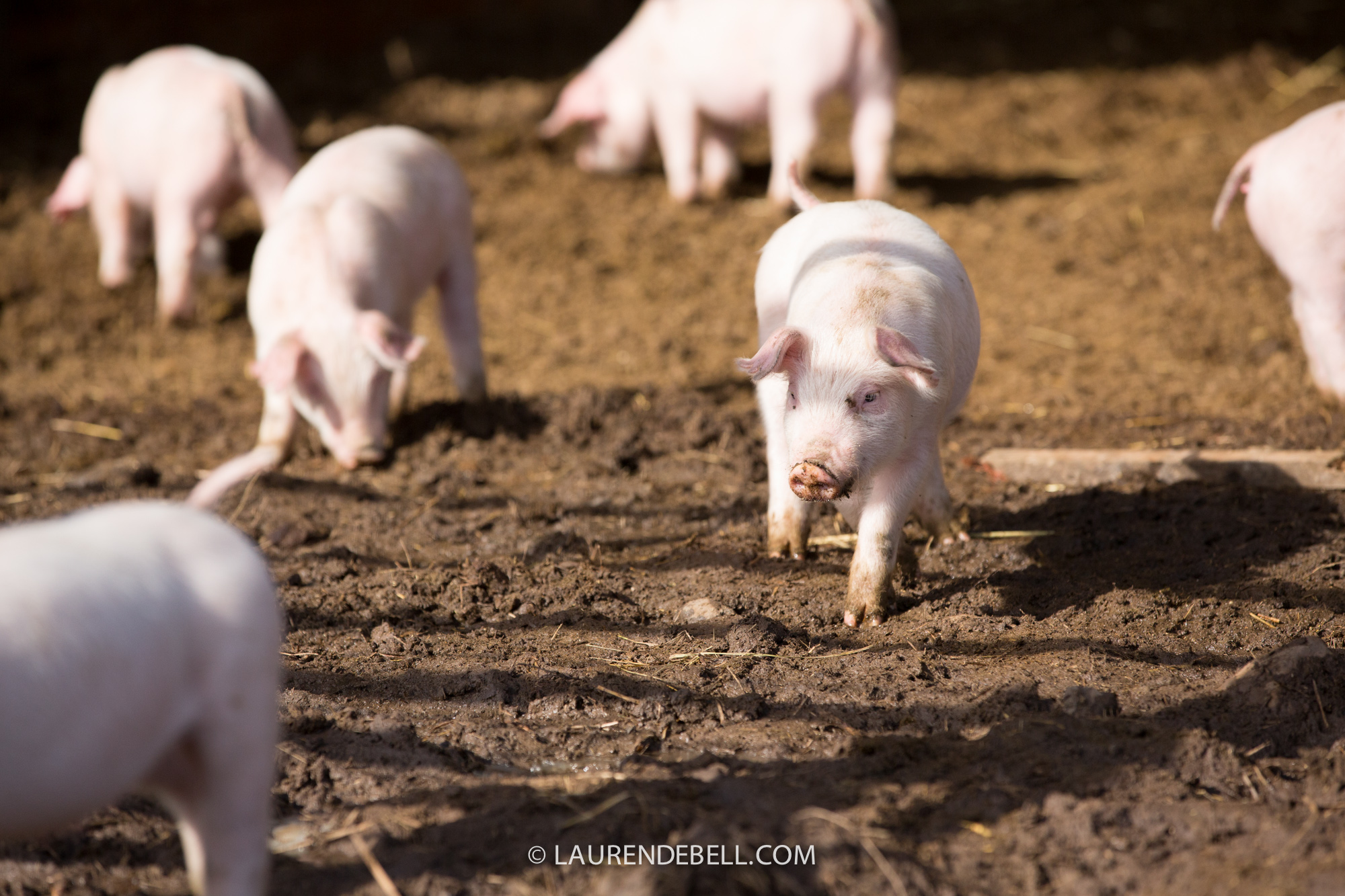
8. I find a tremendous difference in the cooking of many of the cuts of grass-fed meats. Can you please share why this is?
Grass finished meat is much leaner and because of this, the meat will cook a lot faster. Basically, the meat does not have as much fat content and marbling; therefore, it heats faster.
9. The fats on grass fed are a little yellow and not as white as the grain fed. The grass fed fat also tastes SO MUCH better! What makes this color difference and why is this so delicious to many of us.
Fat is where much of the nutrients as well as the antibiotics and steroids are stored. Corn is used as a high protein source of feed and with higher protein rations the animal will finish quicker and the fat is much whiter. The yellow shade of fat is the natural color of fat which has not been forced to eat high quantities of protein. The fat tastes good because it is natural and not full of fillers and synthetic chemicals lol! That’s our guess, not sure how scientific that is!
10. I recently ate some of your incredible grass fed pork. OMG, Rachel! I am not a huge pork eater though I am an avid bacon nut. I ate three different cuts and they were lean and the fat on the chops were addicting. I could have sat and eaten the fat alone (and I did). It was near embarrassing 🙂 The best way to describe this was CLEAN, creamy, flavorful and delicious. What happened- why is this? What did you do to me… 🙂 Lol!!
Yay!!! Pork does not have to be this misconceived fatty meat! Plus we’ve learned that clean meat=clean fat and fat is good for you so, yes, eat the fat!!! As a child, I rarely ate pork growing up and it was due to this feeling that a pork chop was more gristly fat than meat! Not so, our pork is leaner and our secret ingredient is love! Lol! That and low stress, room to run and play, always having free choice of food, water, shelter or sunshine, and summertime addition of the ultra-exclusive and swanky piggy pool. Members only. Lol They’re loving it! Our pigs are not exclusively fed grass, they do eat grass, roots, bugs, veggie & fruit scraps, but their main feed is corn based mixed with a protein such as soy or linseed.
11. What about the people who are used to the flavor and fat of grain-fed? What are some things you can tell them about transitioning to the taste of grass-fed?
The number one reason to switch their buying and eating habits would be for health reasons. There is a reason why our youth are hitting puberty at a much earlier age. There is a reason why our population is becoming immune to antibiotics. Your body is only as good as what you put in it. A diesel truck will not run on gas and vice versa. We have to get back to the basics. Eat the way our ancestors ate, only consume what we are intended to consume. People can still enjoy the flavor that fat adds to meat with the grass finished products. We would tell them to just give it a try or do blind taste test. It is about educating people and getting them over the mindset that you have to have inches of fat and a lot of marbling on the steaks for them to taste good.
12. Grass-fed is also better for the planet. What are the environmental benefits to a grass-fed ranch?
Well, when you think about it, grass-fed animals raised on ranches versus factory farms require less oil and gas than animals that eat corn and soy, simply because tractors and equipment needed to harvest these crops require fuel, oil etc. On our ranch, the fertilizer in our fields comes from the cows wintering on the ranch and in the spring we drag the fields (which basically is the process of breaking up cow manure piles with a tractor or four-wheeler. We string large old tires along the back and then drive along and the tires break up the piles), not chemical, synthetic fertilizers that are sprayed on. We think one of the biggest issues is the confinement of factory farm animals where manure is piled up in masses and trucked to areas where it’s dumped off overwhelming the area with levels of excess nitrogen and phosphorus which actually end up polluting the soil. We do have a manure pile from the pigs that we work with (tilling and turning over) to create compost.
13. Is grass-fed a more humane way of raising pigs and cattle? How is this actually done on your ranch? How would another rancher treat his cattle and pigs, for comparison?
Our cattle are the only grass fed and finished product. The pigs do eat some grass but their main diet consists of a corn based ration. Pig’s digestive systems** are very much different than that of a cow. They are able to break down the grains and utilize them in such a way that it works in their benefit. Our cattle are rotated from pasture to pasture during the summer months to ensure no over grazing of the ground. We have to be stewards of the land and take care of it because at the end of the day we all depend on it. When you over graze land it damages the grass root system and will not grow back as full and strong. If you over graze it has been estimated that half of the roots will die therefore being more dependent on surface water vs. allowing the roots to reach down in the soil for moisture. Cattle by nature are grazers. They will not over graze if they have room to move and they will search for feed. If you keep them confined they have no choice but to eat what is there and over time there will be nothing but dirt. We like to think our animals are very spoiled. We create a bond with them and respect that at the end of the day they are making the ultimate sacrifice for us to eat. We believe they should have the very best life they possibly have. Other traditional ranchers respect their animals but they are in the production business and they are just another number. I have had that very same mentality growing up. We liked our cows but their job was to have babies that we could sell in the fall to pay the bill for that year. These ranchers are also stewards are the land as they depend on it to feed their animals as well. The main difference would be our animals are not just numbers, but part of our family and some are more liked than others but all are treated the same! At the end of the day our calves do not end up confined in feedlots or pens, but have the opportunity to move about, eat all they can and drink clean fresh water. They are not stressed being loaded into semis to go to the processing plant or forced to eat a bunch of fillers.
**Digestive Systems: Cattle are herbivores. Their digestive systems are designed to eat plant material, such as grass. They only have 32 permanent bottom teeth and zero teeth on the top of their mouths. On the top of their mouth’s they have something called a dental pad. A dental and a rough tongue make it easier for cows to grasp blades of grass and pinch grass off between their tongues and the dental pad. They do not “bite” grass.
Pigs on the other hand are omnivores, like humans. Their digestive system is actually very similar to humans. They can digest various types of foods–plants, meats, grains etc. The grasses that they are eating and rooting up here are various native grasses, including Timothy Brome, which is what our steers eat. The corn and soy feed is a pre-mixed ration of grain and protein that looks like malt-o-meal. That is what we put in their feeders. In our opinion, pigs need more substance and protein than just grass. Also, pigs are likely to taste much better on a corn feed.
I can’t say I have ever had a grass fed pork chop, but if you’ve ever had wild boar, which are mostly eating plants, bugs, roots, berries, they are extremely tough and not a meat that you typically cut up into steaks and roasts. Most hunters we know have their entire boar ground into sausage. I am not saying that grass-fed pork isn’t great or available in some places or even that I disagree with the concept, it’s just not the way that we choose to raise our pigs.
14. And finally is there anything else you’d like to say or add about this topic, Rachel?
We are not here to bash grain-finished meats, although 100% grass-finished is a healthier/environmentally friendly option, at the core of what we do it animal welfare. If you prefer the taste of corn finished or what have you, what we really care about is how the animal is raised. If you have a steer that is finished on grain at a ranch where he is loved and is happy, you’re going to have a healthier beef regardless because the meat isn’t infiltrated with stress hormones.
Our MO isn’t to tell people what to eat or what to buy, but in our minds we want to help people to learn how to make better choices in the foods they eat in order to live healthier lives. We learn so much from others and we want to contribute and pass knowledge on to others too. Of course we sell products and want to make a living, but we also want to make a difference in the lives of our customers or those individuals reading this interview. We really want to help educate people any way we can, even if they don’t purchase our products.
Also check out Part 1 and Part 3 of my interviews with 5280 Meat Co.!
If you have any questions or suggestions, email me at Info (at) TinaTurbin (dot) com


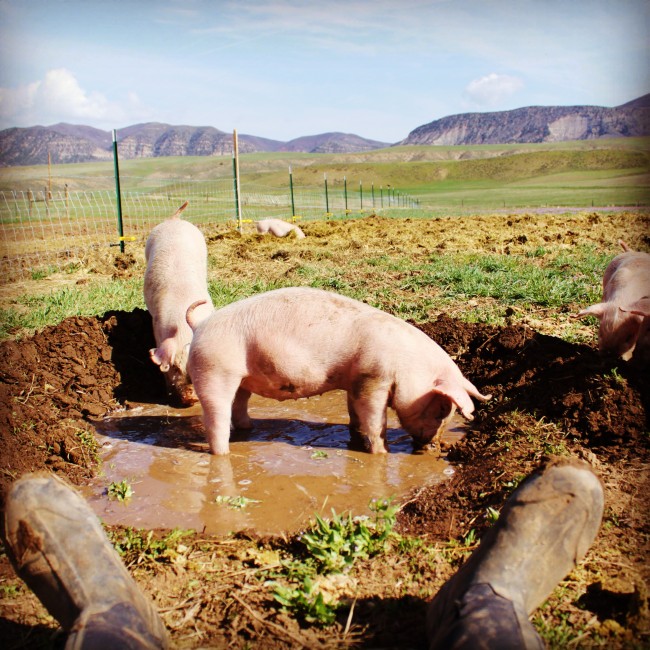
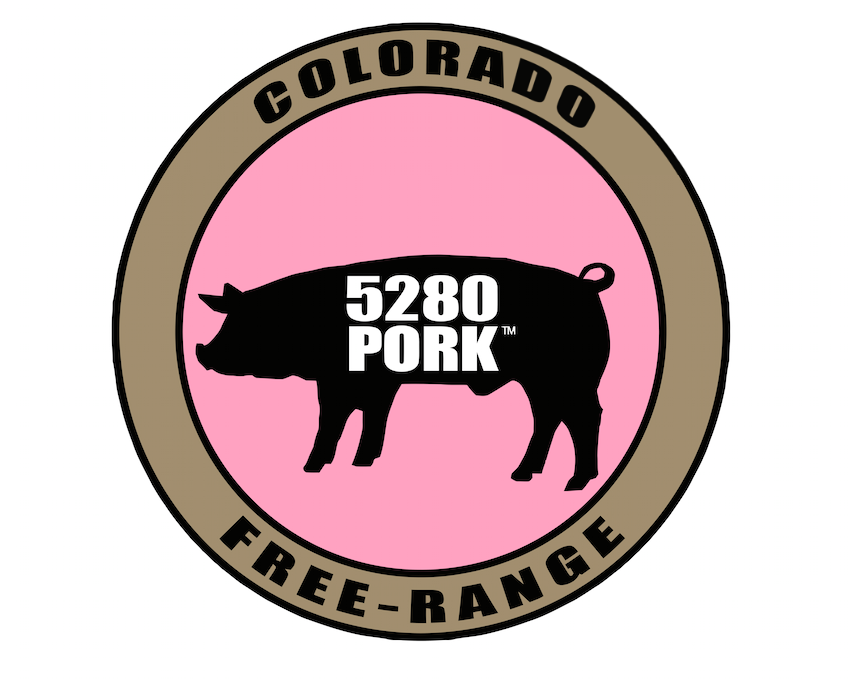

Wow!! I am just loving these posts from Rachel!! I love learning about all that she and her family does, and am in constant awe of it all!
Just curious, how do animals “grass feed” in the winter when there is no grass available?
Hi Donna,
Below is a reply from Rachel at 5280MEAT.com regarding your question above:
Our animals are grass-fed through the winter months with hay. We feed 1-2x per day and put up our own hay which is comprised of Timothy Brome native grass. I hope this helps answer your reader’s question! As far as other ranchers, I cannot answer for them as far as what they feed in winters, but usually it’s hay of some sort, or a mix.
Fondly,
Tina